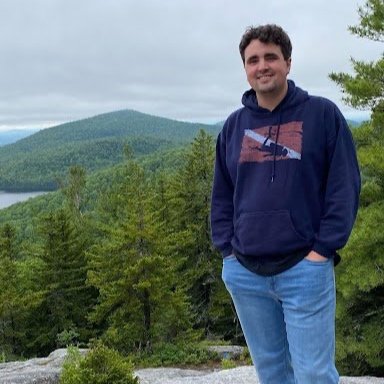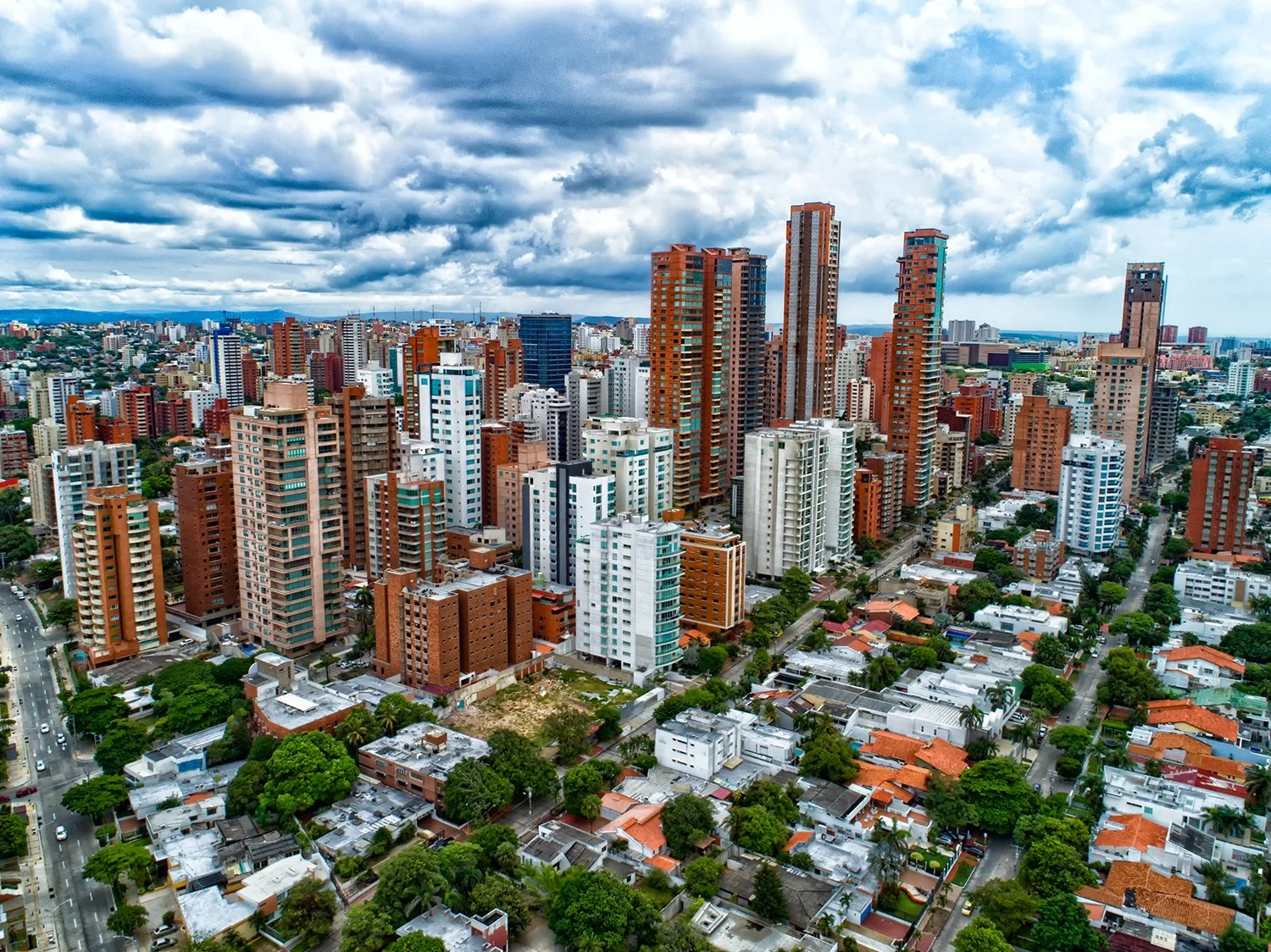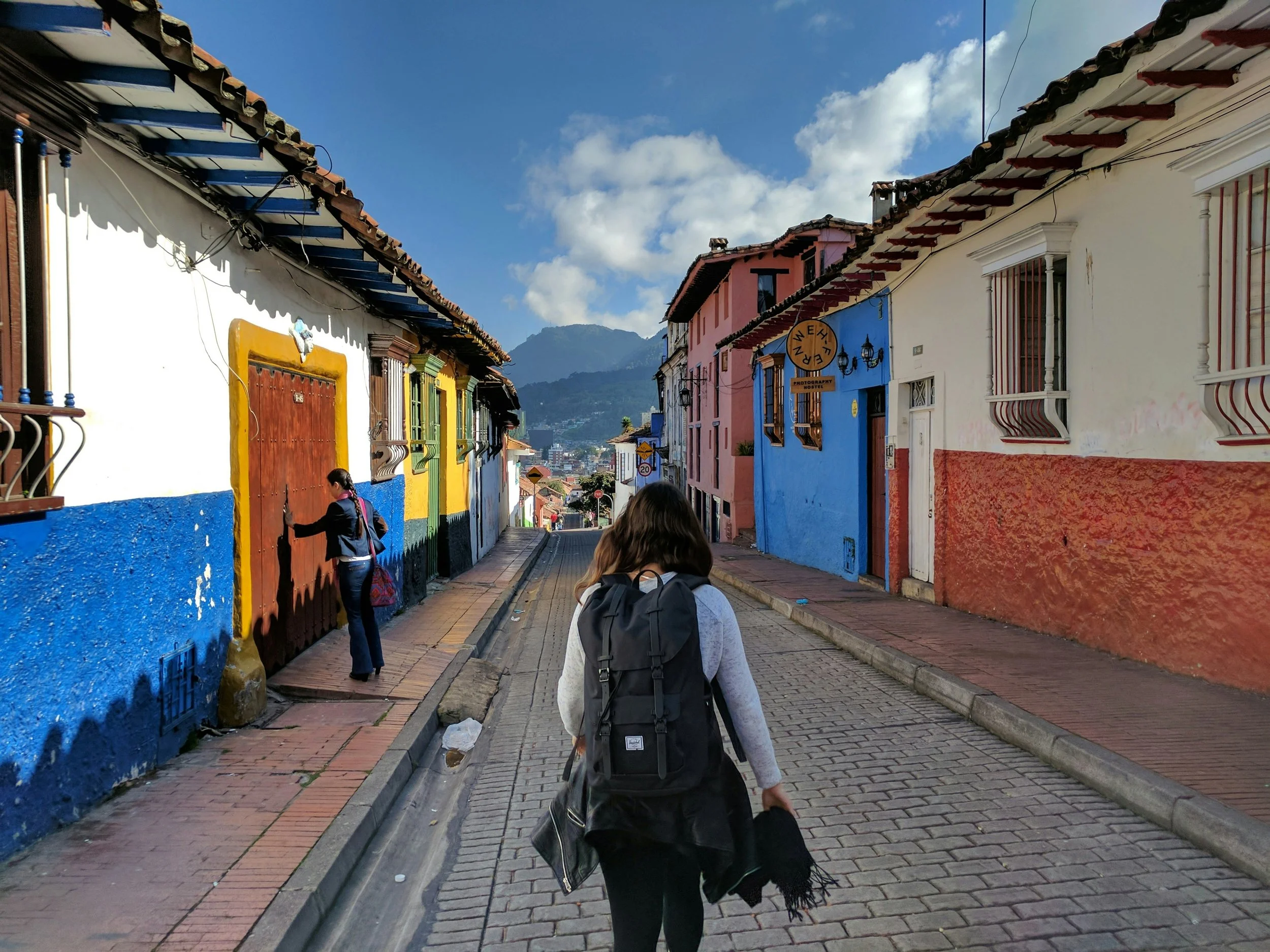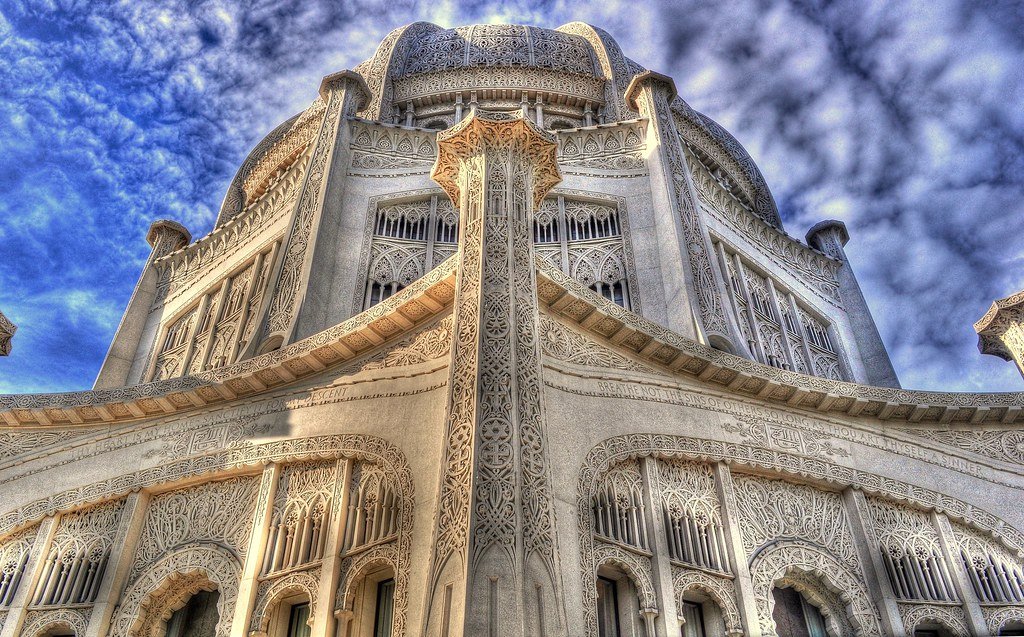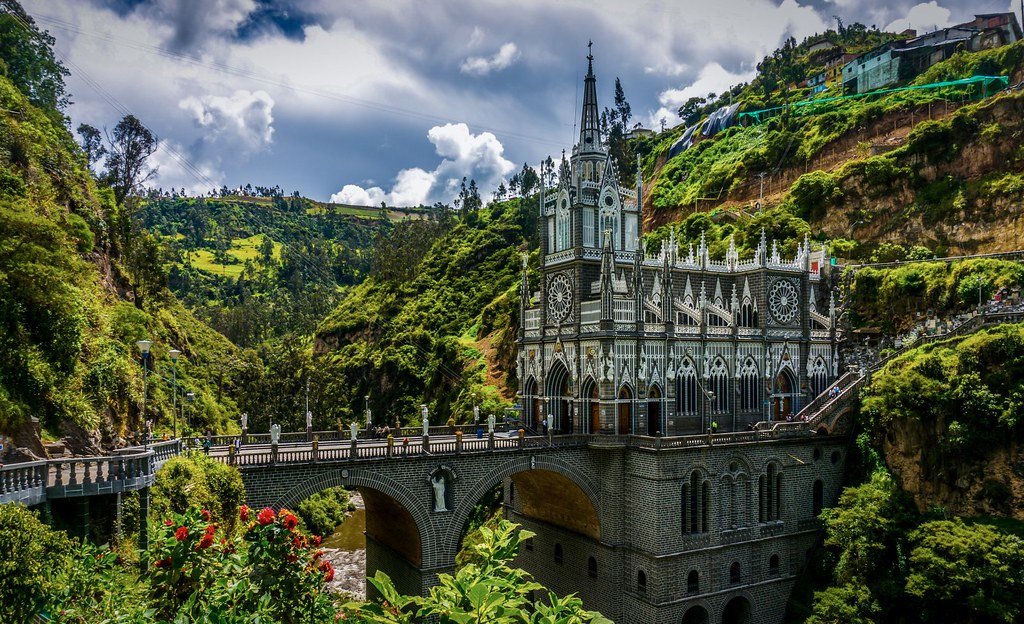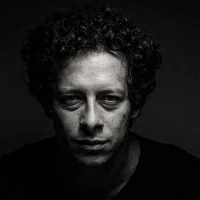Colombia remains the deadliest country for environmental defenders, with 79 of the 196 documented murders occurring there in 2024, largely targeting Indigenous and Afro-descendant communities.
Read MoreDry Spell: Drought Endangers Lives Across South America
With rainfall still scarce, Colombia has begun taking drastic measures to conserve what little water they have left.
The parched earth characteristic of a drought. Pmau. CC BY-SA 4.0
2024 has been one of the driest years in Colombia’s history. The summer months are usually the rainiest in the country, but this year has seen an alarming lack of precipitation and a drastic reduction in rivers and reservoirs. As the country slowly dries up, officials have started implementing policies to ration water, which will only become more severe as the drought continues.
In the last three months, the Chuza Reservoir (one of the largest in Bogota, Colombia) has lost a huge portion of its water supply. During the 2023 dry season, the reservoir was reduced to 58% capacity; as of mid-September 2024, it dropped to just 36%. This led to the second implementation of water rationing this year (the first was enacted in April 2024) but as rainfall remains scarce, these regulations have grown even more stringent. Currently, citizens are prohibited from washing their cars, irrigating gardens, and using fountains or other water decorations. However, as water supplies continue to dwindle, the city has also enacted a system by which residents will have to spend 24 hours without water once every nine days.
Colombian officials have stated that the nation’s only real hope is the return of regular rainfall. Reservoirs cannot fully recover without precipitation, and without reliable water stores, cities will be forced to reduce their water consumption even further. The severity of this drought has also inspired fears of reaching “Day Zero,” the point at which a city’s water supply falls below the necessary amount to support daily life. As of Oct. 10, 2024, Bogota’s Chuza Reservoir is just 7% above this cutoff point.
Columbia is not the only South American country experiencing drought. The majority of the continent is drying up, generating a variety of other crises, including a drastic increase in wildfires. Additionally, the Amazon River is experiencing an alarming dry spell, jeopardizing the lives of the communities that depend on it for food and water. Endangered species such as river dolphins are also threatened by the mass evaporation, which has reduced the river to about 10% of its previous size.
Although officials have stated that there is little that can be done for Bogota (and Colombia at large), several nonprofits around the world have taken action to provide aid for affected civilians. These include WaterAid, a company that focuses on providing clean water for underprivileged communities. During this drought, their efforts are more needed than ever. Interested parties can donate to their various projects here. Another such organization is Water Fund Bogota, which focuses specifically on restoring and maintaining natural sources of clean water like rivers and lakes.
Ryan Livingston
Ryan is a senior at The College of New Jersey, majoring in English and minoring in marketing. Since a young age, Ryan has been passionate about human rights and environmental action and uses his writing to educate wherever he can. He hopes to pursue a career in professional writing and spread his message even further.
Colombia’s Guatape: Where Adventure Meets Art
The town of Guatape dazzles visitors with its vibrant murals and lively tuk-tuks, blending artistic charm with breathtaking natural beauty.
Read MoreA Literary Pilgrimage: Colombia with Gabriel García Márquez
A travel itinerary for bibliophiles, Gabo fans and adventurers alike
Author Gabriel García Márquez, “Gabo,” as an older man. Sebástian Freire. CC BY-SA 2.0.
Author Gabriel García Márquez, affectionately nicknamed “Gabo,” put his native country of Colombia on the literary map through his novels and short stories.
Critics lauded his novel Love in The Time of Cholera, a tale of romance between social classes, as one of the best love stories of the 20th century. His work One Hundred Years of Solitude, a multi-generational novel about a family from an isolated town, is considered the Bible of magical realism, a genre that describes fantastical events in an otherwise realistic tone.
Adventurous travelers and bibliophiles alike can experience the magic and romance of Colombia through García Marquez's eyes with an itinerary based on his life and literature.
A colorful street scene in Cartagena’s historic center. Joe Ross. CC BY-SA 2.0.
1. Cartagena
In an interview with actor and filmmaker Salvatore Basile, García Márquez said, “I would say that I completed my education as a writer in Cartagena.” With that in mind, Caribbean-flanked Cartagena is the ideal place to begin your Gabo-inspired tour of Colombia.
García Márquez lived in Cartagena for a year as a young man and kept a winter house in the city as an older man. He sets much of Love in The Time of Cholera in Cartagena. During his time in Cartagena, he was known for lingering on the plazas, waiting for something interesting to happen.
To experience the city from Gabo’s perspective, people watch at the lush, lively Plaza Fernandez de Madrid and historic, central Plaza Bolivar. Grab a drink at El Coro, the upscale cocktail bar in The Sofitel Santa Clara hotel, which García Márquez frequented. Visit Gabo’s marble-clad final resting place at La Merced monastery on the University of Cartagena’s campus.
The orange-tinted cityscape of Barranquilla. Fernando Orozco. CC BY-NC-SA 2.0
2. Barranquilla
Following Gabo’s footsteps, travel from Cartagena to Barranquilla, a seaport known as Colombia’s “Golden Gate" because here the Caribbean meets the country’s major Magdalena River. Gabo lived here in the 1950s while he worked as a journalist.
While living in Barranquilla, García Márquez was a part of the Barranquilla Group, a collection of writers, journalists and philosophers who met Barranquilla in the mid-twentieth century. In addition to García Márquez, notable members include Álvaro Cepeda Samudio, Germán Vargas and Alfonso Fuenmayor. Allegedly, Gabo’s relationship with these men inspired the characters of the “four friends of Macondo” in One Hundred Years of Solitude.
Connect with Gabo and his Barranquilla Group friends at La Cueva, a bar where the Barranquilla Group of writers and journalists met. It continues to serve as a hub of cultural activity, serving traditional food like Butifarra ceviche and Cashew rice, as well as supporting Colombian literary magazines. Tour the peach-colored church, Iglesia Nuestra Senora del Perpetuo Socorro, where Gabo married his wife Mercedes Barcha.
The Casa Museo Gabriel García Márquez, Gabo’s childhood home. Armando Calderón. CC BY-NC-ND 2.0.
3. Aracataca
After connecting with García Márquez’s early days as a writer in Barranquilla and Cartagena, go back to where it all began in Aracataca: Gabo’s steamy, sleepy and tropical hometown. Gabo’s success put Aracataca on the map, rejuvenating the town as small groups of literary tourists trickled in to see where a genius grew up. You can meander through the white house and its verdant garden where García Márquez lived until he was eight, Casa Museo Gabriel García Márquez.
In addition to being the locale of Gabo’s childhood, Aracataca inspired Macondo, the setting for One Hundred Years of Solitude. Stop for a photo opportunity in front of Aracataca’s bright, multicolored welcome sign, which includes an equally vivid Macando welcome sign in smaller letters.
Walking the streets of La Candelaria neighborhood in Bogotá. Michael Barón. CC0.
4. Bogota
Conclude your tour of Gabo’s Colombia in mountainous Bogota. While not Gabo’s favorite city in Colombia, he called it “a remote, lugubrious city where an insomniac rain had been falling since the beginning of the sixteenth century” in his autobiography—it played a crucial role in his education.
García Márquez attended secondary school and earned a law degree in Bogota. He published his work in the city’s newspaper El Espectador. He also lived here temporarily with his wife later in his life, in the colonial neighborhood La Candelaria.
Learn more about his work and life at the Centro Cultural Gabriel García Márquez, a museum and hub of artistic activity in a circular building with its roof offering views of Bogota’s mountains and cityscape. Sip a coffee at Cafe Pasaje, an old-school coffee shop where Gabo allegedly had his java each day when he was a young journalist.
Annie O’Brien
Annie is a third-year student at George Washington University studying English, Creative Writing, and History. From Philadelphia, she is an avid reader, pop-culture enthusiast, and traveler. She’s always eager to talk about her adventures abroad and domestically, whether it's telling about the time she hitch-hiked in Bavaria or offering recommendations for the best bookstores in Key West. She hopes to become a published author one day. Enjoy more of her writing on her Substack.
Colombia Unveiled: My Journey from Mountainous Bogota to Caribbean Cartagena
From palm forests to quaint towns to the scenic Caribbean, Colombia defies stereotypes and should be a must-visit destination on your South American travels.
Read More9 Beautiful Houses of Worship Around the World
Different religions have different ways of showcasing their houses of faith.
For many centuries across the globe, people have built houses of faith to honor the higher power(s) they worship. Below is a list of different architectural representations of these sacred spaces.
1. Borgund Stave Church
Borgund, Norway
The portrayal of dragon heads on the roof of the Borgund Stave Church in Norway was built to ward off spirits in 1180. The church was dedicated to Apostle Andrew and has been incredibly preserved. The medieval church received certification in 2010 for being an environmental lighthouse. The church is set to reopen to visitors on April 15.
2. Golden Temple
Amritsar, India
Named the holiest temple in the Sikh faith, the Golden Temple’s upper floors are covered in 750 kilos of pure gold. It was built by Guru Arjan in 1604 and is located in the Northwest of India, near the border of Pakistan. It is said that the waters surrounding the temple in the river Ganga cleanse one’s bad karma when taking a dip. It is visited by 100,000 worshippers daily.
3. Hallgrímskirkja
Reykjavik, Iceland
This Lutheran Icelandic church was built by architect Guðjón Samúelsson and, at 240 feet, stands as the tallest building in the capital and the second tallest in all of Iceland. The design is influenced by the country's volcanoes and the natural surroundings that inhabit the nation. Visible from almost any point in the city, the church is known as one of Iceland’s landmarks and largest church.
4. Kizhi Pogost
Kizhi Island, Russia
Kizhi Pogost. Alexxx Malev. CC BY-NC 2.0
Set on Kizhi Island in Russia’s Lake Onega, Kizhi Pogost is a UNESCO World Heritage site consisting of two wooden churches and a bell tower built in 1714. What makes this an incredible architectural structure is that it was made completely of wood, with no metal or nails involved. Today, the churches are an open air museum.
5. Wat Rong Khun
Chiang Rai Province, Thailand
Designed by Thai visual artist Chalermchai Kositpipat, Wat Rong Khun (also known as The White Temple) was created to honor Buddha’s purity. There are many intricate details in the space, including carvings of monkeys, people and hands among other things. Today, Kositpipat has only completed three of the nine buildings he has plans for. The temple entrance cost is $1.50, Kositpipat will not accept more because he does not want large donors to influence his art. The temple is being run by a team of volunteers.
6. Las Lajas Sanctuary
Ipiales, Colombia
Las Lajas Sanctuary. BORIS Gt. CC BY-NC-ND 2.0
Located less than seven miles from the Ecuadorian border, Las Lajas Sanctuary sits over the Guaitara River. The Roman Catholic basilica has three iconic features. First, the bridge has statues of angels playing instruments on each side. The second is the stained glass by Italian artist Walter Wolf. Lastly, there is an image of the Virgin Mary painted on the back stone wall. The neo-Gothic basilica is surrounded by lush vegetation and was named the most beautiful church in 2015 by The Telegraph.
7. Great Mosque of Djenné
Djenné, Mali
Great Mosque of Djenné. Mission de l'ONU au Mali. CC BY-NC-ND 2.0
Globally known as an example of Sudano-Sahelian architecture and one of Africa’s most famous structures, the Great Mosque of Djenné was built in 1907 from mud and brick, which needs regular replastering to keep its form. Today, the Great Mosque is a UNESCO World Heritage Site and a sacred destination for Muslims.
8. Jubilee Synagogue
Prague, Czech Republic
Jubilee Synagogue. BORIS G. CC BY 2.0
The colorful and intricate Jewish Jubilee Synagogue, also known as the Jerusalem Street Synagogue, was built in 1906 by architect Wilhelm Stiassny to commemorate the Emperor Franz Joseph I’s ascension to the throne. A preserved organ by composer Emanuel Stephen Peter is played for visitors. Today, it is open to the public and used for Orthodox prayer services.
9. Szeged Synagogue
Szeged, Hungary
New Synagogue. Emmanuel Dyan. CC BY-NC-SA 2.0
The second largest synagogue in Hungary, Szeged Synagogue merges Art Nouveau with Gothic, Moorish, Byzantine, Roman and Baroque interior design. The sanctuary’s seating faces a Torah ark made with wood from the banks of the Nile River. The triumphal arch of the building displays the biblical commandment, “Love your neighbor as yourself" in both Hebrew and Hungarian.
10. Temple of Heaven
Beijing, China
Temple of Heaven in Beijing. Fabio Achilli. CC BY 2.0
An imperial sacrificial altar, the Temple of Heaven in Dongcheng District, Beijing is considered the “supreme achievement of traditional Chinese architecture.” It is 273 acres and located in a large park, measuring 38 meters high and 30 meters in diameter, built on three levels of marble stones. It was completed during the Ming dynasty in 1420 and used to pray for harvest and for worship. In 1998, it was named a UNESCO World Heritage Site.
Jennifer Sung
Jennifer is a Communications Studies graduate based in Los Angeles. She grew up traveling with her dad and that is where her love for travel stems from. You can find her serving the community at her church, Fearless LA or planning her next trip overseas. She hopes to be involved in international humanitarian work one day.
Police Brutality Increases Amidst Protests In Columbia
Colombia’s police brutality, economic inequality, unemployment and poor public services have been brought into the spotlight after the April 28 protests against a proposed nationwide tax increase.
Protesters holding a sign that says “if they keep killing us, we’ll keep marching.” Ox.ap. CC BY 2.0
The COVID-19 pandemic has taken a severe social and economic toll on Colombia; with more than 101,000 deaths and 5 million jobs temporarily affected, Colombia recorded it’s largest recession on record. With many Colombians struggling to find work, the concept of the proposed tax change by the government was immediately protested, later withdrawn by the government after a few days of protest.
The proposed tax increase would have affected anyone making more than $656 a month, and President Iván Duque initially insisted that the tax was needed to fix the country’s economy. After the protests caused deaths, however, he asked the Congress to withdraw the proposed law and created a new law to avoid financial uncertainty. The protests ignited civil unrest that lasted after the withdrawal of the tax increase. On June 15, organizers said that they are temporarily suspending the weekly Wednesday protests.
The earlier protests highlighted the excess of police brutality in Colombia. More than 1,100 protesters and bystanders have been injured since April 28, and the total number is most likely higher as many cases have not been reported to authorities. Human Rights Watch confirmed 34 deaths, including 2 police officers and 31 demonstrators or bystanders, 20 of whom appeared to be murdered by the police.
The Independent Forensic Expert Group of the International Rehabilitation Council for Torture Victims, an international group of forensic experts, explained that live ammunition was used on individuals, causing deaths. Also, IRCTV concluded that tear gas and kinetic impact projectiles are being misused, causing death and severe injury including blunt trauma to eyes.
More specifically, at least 16 protesters or bystanders died from live ammunition of police firearms, at least one other victim died from beatings and three others from inappropriate or excessive use of teargas or flash bangs. Additionally, there were 9 cases of severe eye injuries from either teargas cartridges, stun grenades, or kinetic impact projectiles fired from riot guns. Human Rights Watch, also stated, “Victims included journalists and human rights defenders who were covering the protest, including some who wore vests identifying them as such.”
Furthermore, on May 14, the Ombudsperson’s Office reported 2 cases of rape, 14 cases of sexual assault and 71 other cases of gender-based violence by police officers.. Two cases of sexual violence by police officers against protesters were documented by Human Rights Watch.
In November 2016, the Colombian government and the Revolutionary Armed Forces of Colombia reached a peace accord after a 52-year armed conflict, demobilizing the country’s then-largest armed group. Protection of human rights defenders through specific initiatives was a part of the agreement. As seen with these recent protests, however, the agreement has not been held to the highest accountability. Conflict-related violence has displaced more than 8.2 million Colombians since 1985.
On June 6, President Iván Duque stated that the government would take steps to “transform” the police. The protests continued from the end April untill mid-June; National strike committee spokesman Francicso Maltes said to Al Jazeera that the umbrella of workers unions, student organizations and others decided to “temporarily” pause the Wednesday protests. However, Maltes also stated, “Protest in Colombia will continue because the reasons behind it are still there.”
Unions and business associations will draft bills to share with Congress when it begins a new session on July 20—a protest is expected on that day, stated Maltes. “We hope that Congress, and lawmakers, do not fail Colombians like President Ivan Duque has,” said Maltes.
Kyla Denisevich
Kyla is an upcoming senior at Boston University, and is majoring in Journalism with a minor in Anthropology. She writes articles for the Daily Free Press at BU and a local paper in Malden, Massachusetts called Urban Media Arts. Pursuing journalism is her passion, and she aims to highlight stories from people of all walks of life to encourage productive, educated conversation. In the future, Kyla hopes to create well researched multimedia stories which emphasize under-recognized narratives.
Honoring San Basilio de Palenque: The First Town Liberated from Slavery in the Americas
The story of San Basilio de Palenque is one of unparalleled strength, resistance and bravery.
River near San Basilio de Palenque. Fundacion Gabo. CC2.0
Roughly 30 miles away from the port city of Cartagena, Colombia, lies the small town of San Basilio de Palenque. Palenque has rich historical significance, as it was the first free African town in the Americas. The town was declared a “Place of National Character and Cultural Interest” by the Colombian government and a “Masterpiece of the Oral and Intangible Heritage of Humanity” by UNESCO in 2005.
History of San Basilio de Palenque
Town square in San Basilio de Palenque. Restrepo. CC2.0
San Basilio de Palenque was one of many walled forts, known as palenques, that were founded by those escaping slavery in colonial times. Founded in 1603 by Benkos Bioho and 36 other people, San Basilio is the only palenque remaining to this day and was successful due to its isolated location amid swamps and hills. Escaped slaves from Cartagena and surrounding regions would travel to San Basilio de Palenque in the hopes of seeking freedom. Against all odds, “palenqueros” formed their own army, language and support system to stay safe. The town was declared the first free town in the Americas in 1713, nearly 100 years before Colombia became independent from Spain.
Palenqueros in Colombia Today
Palenquera women in Colombia. Vest. CC2.0
The isolated nature of San Basilio de Palenque provides limited employment opportunities, which in turn causes the migration of many palenqueros to larger cities in search of work. On the streets of Cartagena, palenquero men are engaged in construction projects while palenquera women wearing brightly colored dresses sell fresh fruit and traditional sweets made of nuts, tropical fruits and panela (unrefined sugar). In a video from Great Big Story, the palenquera Everlinda Salgado Herrera discusses the historical and cultural significance of a sweet called alegria (meaning happiness in Spanish), which represents the joy palenqueros felt when they found freedom.
Although palenqueros are becoming integrated into Colombian society, they were initially met with discrimination, sometimes leading to feelings of resentment and denial over their cultural and racial identity. In the 1980s and ‘90s, a young generation of palenqueros advocated for a resurgence of palenquero culture, hoping to promote an appreciation of their rich heritage. Strong cultural pride among palenqueros continues to this day. Edwin Valdez Hernandez, a dance instructor at the Batata Dance and Music school in Palenque, states, "We defend our values with a shout. We are Black, and we are defending our culture."
Cultural Treasures of San Basilio de Palenque
Drummers in Palenque. Vest. CC2.0
Palenque is known worldwide for its unique language, music and culinary scene. One of Colombia’s 69 Indigenous languages, the palenquero language is only spoken in San Basilio de Palenque. Captives on European slave ships came from all parts of Africa speaking a variety of languages. As a colonizing strategy, people were purposely mixed together so they would not be able to communicate to plan an escape. Despite this, palenqueros created their own language, influenced by Castilian Spanish, Bantu, Portuguese and English.
The cuisine of San Basilio de Palenque is a delight for the taste buds. Some dishes include seafood rice, mote (a traditional Caribbean cheese), and fish cooked in a creamy coconut sauce with pigeon peas, cassava and panela sugar. Palenquero cooking continues to reach international heights, most notably when the book “Cocina Palenquera Para el Mundo” won first prize at the 2014 Gourmand Cookbook Awards in Beijing.
Music is an incredibly important part of palenque culture and throughout Colombia. Palenque music is joyful with sweeping rhythms and fast drum beats and is coupled with bright costumes and a seemingly endless stamina for dancing. Some of the many dance styles include chalusonga, paseo, champeta, entrompao and palenquero son. Travelers can learn about Palenque’s rich musical culture by attending the Drums and Cultural Expressions Festival held annually in October.
The town of Palenque is also known for its interesting methods of running society. Instead of a police presence, Palenque is organized into systems called ma-kuagro, where people have designated roles and watch over each other. The crime rate in the town is nearly nonexistent due to this sense of community among Palenqueros. Interestingly, palenque women’s hairstyles also have historical significance. In colonial times, women would braid intricate patterns in their hair that were used to create maps, store gold and transmit messages to help people reach freedom. A statue of Palenque founder Benkos Bioho breaking out of chains stands in the town center.
A place of redemption and perseverance, San Basilio de Palenque is a cornerstone of Black resistance in Latin America and a perfect destination for a socially conscious traveler. Confronting past historical truths and being willing to listen to others’ experiences helps shed light on modern social issues to hopefully make the world a brighter and better place.
Megan Gürer
is a Turkish-American student at Wellesley College in Massachusetts studying Biological Sciences. Passionate about environmental issues and learning about other cultures, she dreams of exploring the globe. In her free time, she enjoys cooking, singing, and composing music.
The Museum of Antioquia, in Medellin. Jonathan Robinson.
Turmoil, Pain, and Beauty: Colombia’s Blossoming Art Scene
With its rich, diverse culture, picturesque landscapes and lush natural resources, Colombia should be one of the most popular tourist destinations in South America. However, the country’s image took a hit in the 1980s, with the rise of cocaine and the drug cartels that controlled it, most notably, Pablo Escobar and his Medellin cartel. In recent years the Colombian government has addressed this problem head-on, dismantling drug rings and adopting a national slogan designed to put visitors at ease: “The only risk is never wanting to leave”. A recent spike in Colombia’s art scene may also help lift the stigma that shrouds the country, adding a new dimension to a people and culture the world thought it knew, and helping Colombia develop a new identity, or perhaps, reclaim an old one.
To be fair, Colombia is still the world's top producer of cocaine, and the legal status of cocaine within the country, combined with the high demand for it outside of the country makes the drug trade a recurrent enemy of the government. To make matters worse, drugs are not the only vice thriving in Colombia. Prostitution is also legal and readily available, making Colombia a popular destination for sex tourism, like Thailand or the Netherlands. In 2012, American secret service agents made international headlines when they got into a spat with a prostitute over an unpaid bill for “services rendered” while then President Barack Obama was visiting Cartagena. While the incident was a PR nightmare for the US, it also added to Colombia’s already prevalent image as a haven for illicit activity.
There is, however, much more to Colombia than sex and dope—and there always has been. In the heart of Medellin, the very city Escobar called home, lies the Museo de Antioquia, one of Colombia’s oldest museums. The museum features the work of famed Medellin artist Fernando Botero, known for his voluminous depictions of people and animals. This “Boterismo” style won Botero international fame, with many of his paintings and sculptures being featured in museums around the world. There was even a restaurant named after him in Las Vegas. Medellin is not the only city to get swept up in the art craze. The capital city of Bogota is home to over 100 commercial art galleries, a byproduct of an economic boom that Colombia experienced as the drug wars began to subside and the country began to stabilize.
The works of Fernando Botero are prominently featured at the museum. Jonathan Robinson.
Sometimes, in the scramble to create a compelling story, media outlets may narrow or oversimplify the identities of people. Colombians are joining a long list of ethnic, gender, and religious groups who take issue with the way they are portrayed in the media and are taking it upon themselves to help the world understand that their culture may be a bit more nuanced than it has been led to believe. While the rise of Colombia's art scene may not refute the bloody images the media has shown in the past, it does add to them, creating a separate narrative for the country that exists alongside the current one. In the end, understanding Colombia may not require the world to empty its cup, but rather, to invest in a larger one.
JONATHAN ROBINSON is an intern at CATALYST. He is a travel enthusiast always adding new people, places, experiences to his story. He hopes to use writing as a means to connect with others like himself.
COLOMBIA: Slow Motion Travel
Filmmaker Chris Grewe displays his best experiences while traveling Colombia in slow motion.
Coming of Age in the Amazon Jungle
In a small settlement, deep in the Amazon rainforest, colourful preparations are underway for a very important occasion.
The village of Puerto Esperanza, directly translated as “Port Hope,” is located in the Amazonas department of Colombia — three hours travel by boat from Leticia, the main port in the Colombian Amazon. Here you will find many members of the Tikuna tribe. One of the most numerous peoples in the rainforest, the Tikuna are an extraordinarily artistic people, known for their rich culture and age-old traditions.
One of the most prominent cultural traditions celebrated and upheld by the Tikuna is that of the Pelazón ceremony, a traditional coming of age ritual for young girls, marking the time they enter womanhood. After a whole year of isolation, the girls will be welcomed back into the tribe as women.
At the heart of the Tikuna settlement, in the maloka, or gathering house, people begin preparations for the rituals that will take place during the Pelazón ceremony. They bring together wine and food that have been collected from the community and spend hours crafting beautiful and elaborate feathered drums that will be used during the festival.
One young man plays a whistle to mimic the sounds of the jungle and imitate the demons who are lingering near the maloka, while another heats a fish-skin drum to hone its sound in preparation for the festivities.
Meanwhile, other community members are making uito, a natural pigment that will be used to cover the girls’ bodies during the ceremony.
A Year in Isolation
Following her first menstruation, each young Tikuna girl who has chosen to take part in the ritual and Pelazón ceremony, will isolate herself in a small house made of palm leaves. For an entire year the only person whom she will be allowed to see is her grandmother. Part of a deep cross-generational relationship, the elders teach the young girls many traditional skills from weaving, cultivating crops, and the uses for plants, to taking care of babies, and every other aspect of being a Tikuna woman.
Below you see a Tikuna grandmother brushing her granddaughter’s hair. This young girl is only seven, but has already decided that when the time comes she would like to take part in the Pelazón ritual and ceremony.
The Reunion
After the long year of isolation, the girls’ families work together to prepare a big celebration and invite the whole tribe to welcome their daughter back into community life as a young woman. The celebrations last for three days with drinking, eating and dancing, but first everyone gathers in a procession around the village, collecting all of the girls to take them to the maloka.
Members of the tribe bring animals they have hunted as offerings to the girls’ families. This young man is holding a Terecaya in his hands, a species of Amazonian turtle. The shell is decorated with feathers and hung in the maloka as a symbol of wisdom in the Tikuna culture.
As night falls, the procession continues to make its way around the village, one by one collecting each of the young girls from their homes.
Below is the moment when one of the girls comes out of isolation. She will be completely covered until she is ‘revealed’ during the main ceremony.
The Ceremony
At the heart of the Pelazón celebrations is the big communal feast held in the maloka. The families offer a typical payabarú drink to their guests, people dance to traditional songs, and, in the midst of this feast, the girls come out dressed with feathers and painted with uito pigment.
The girls are unveiled for the first time in their elaborate feather headbands. Below one of the newly welcomed young women dances as part of the ceremony, while the other women and girls look on.
During another important part of the ceremony, young male members of the tribe dress as demons and dance around the girls, enacting temptations that the girls are strong enough to face, now they are women. They wear masks, shake instruments and carry carved wooden penises to symbolise the seduction that the young women may encounter in life.
After the ceremony each girl is said to be ready to embark on her adult life. The long time away with her grandmother as her teacher and the climactic return have prepared her for all aspects of her future, from work, to marriage, to pregnancy and having a family of her own.
It was a privilege to spend time with the community and families of Puerto Esperanza and to observe the Tikuna tribe’s remarkable tradition of the Pelazón ceremony. I would like to give special thanks to Edgar, Otoniel, Obsimar, Vicente and all the other tribe members who allowed me to participate and photograph this very special and private ritual.
THIS ARTICLE WAS ORIGINALLY PUBLISHED ON MAPTIA.
FEDERICO RIOS
Federico is a Colombian photographer whose work focuses on developing documentary photography on social issues in Latin America. Explore more of his work at federicorios.net.


